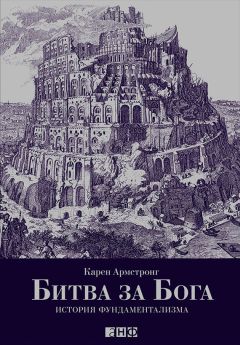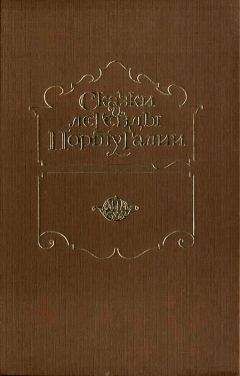200
Nathan O. Hatch, The Democratization of American Christianity (New Haven, Conn., and London, 1989), 22.
Ibid., 25–129.
Ibid., 68–157.
Ibid., 9.
Ibid., 36–37, 68–71.
Ibid., 115–120.
Ibid., 138–139.
Ibid., 71.
Ibid., 57.
Paul Boyer, When Time Shall Be No More: Prophecy Belief in Modern American Culture (Cambridge, Mass., and London, 1992), 83–84.
Ibid., 83.
Ibid., 82.
Daniel Walker Howe, «Religion and Politics in the Antebellum North,» in Noll (ed.), Religion and American Politics, 132–133; George M. Marsden, «Afterword,» in ibid., 382–383.
Robert P. Swierenga, «Ethno-Religious Political Behavior in the Mid-Nineteenth Century,» in Noll (ed.), Religion and American Politics, 158; Hatch, Democratization of American Christianity, 198–200.
Ruth H. Bloch, «Religion and Ideological Change in the American Revolution,» in Noll (ed.), Religion and American Politics, 55–56.
Boyer, When Time Shall Be No More, 82.
Robert C. Fuller, Naming the Antichrist: The History of an American Obsession (Oxford and New York, 1995), 95.
Swierenga, «Ethno-Religious Political Behavior in the Mid-Nineteenth Century,» 159–160; Marsden, «Afterword», 283–284.
Howe, «Religion and Politics in the Antebellum North,» 125–28; Swierenga, «Ethno-Religious Political Behavior,» 152–158.
Butler, Awash in a Sea of Faith, 270.
The Essence of Christianity (trans. George Eliot; New York, 1957), 33. В рус. переводе: Л. Фейербах. Сущность христианства // Избранные философские произведения: В 2 т. Т. 2. – М., 1965.
Karl Marx, «Economic and Philosophical Manuscripts,» in Karl Marx: Early Writings (trans, and ed. T. B. Borrowmore; London, 1963), 166–167. В рус. переводе: Маркс К. Экономическо-философские рукописи 1844 года и другие ранние философские работы. – М.: Академический проект, 2010.
James R. Moore, «Geologists and Interpreters of Genesis in the Nineteenth Century,» in Lindberg and Numbers (eds.), God and Nature, 341–343.
Essays and Reviews, 4th ed. (London, 1861).
Owen Chadwick, The Secularization of the European Mind in the Nineteenth Century (Cambridge, U. K., 1975), 161–188.
Quoted in Peter Gay, A Godless Jew: Freud, Atheism and the Making of Psychoanalysis (New Haven, Conn., and London, 1987), 6–7.
T. H. Huxley, Science and Christian Tradition (New York, 1896), 125.
Ницше Ф. Веселая наука // Ницше Ф. Соч.: В 2 т. Т. 1. – М.: Мысль, 1990.
Ibid.
Paul Johnson, A History of the Jews (London, 1987), 309. В рус. переводе: Джонсон П. История евреев.
Yirmanyahu Yovel, Dark Riddle: Hegel, Nietzsche and the Jews (Cambridge, U. K., 1998), 3–20, 83–97.
«On the Jewish Question,» in Karl Marx: Early Writings (trans. and ed. T. B. Borrowmore; London, 1963). В рус. переводе: Маркс К. К еврейскому вопросу // Маркс К., Энгельс Ф. Соч. 2-е изд. Т. 1. – М, 1955. – С. 382–413.
Benzion Dinur, «The Origin of Hasidism and Its Social and Messianic Foundations,» in Gershom David Hundert (ed.), Essential Papers on Hasidism: Origins to Present (New York and London, 1991), 86–161.
Simon Dubnow, «The Maggid of Miedzyryrzecz, His Associates and the Center in Volhynia,» in Hundert, Essential Papers, 58.
Gershom Scholem, «The Neutralization of Messianism in Early Hasidism,» in The Messianic Idea and Other Essays on Jewish Spirituality (New York, 1971), 189–200; «Devekut or Communion with God,» in ibid., 203–237; Louis Jacobs, «The Uplifting of the Sparks in Later Jewish Mysticism,» in Arthur Green (ed.), Jewish Spirituality, 2 vols. (New York and London, 1986, 1988), II, 116–125; Jacobs, «Hasidic Prayer,» in Hundert, Essential Papers, 330–348.
Benzion Dinur, «The Messianic-Prophetic Role of the Baal Shem Tov,» in Marc Saperstein (ed.), Essential Papers on Messianic Movements and Personalities in Jewish History (London and New York, 1992), 378–380.
Dubnow, «The Maggid of Miedzyryrzecz,» 65.
Ibid., 61.
Scholem, «The Neutralization of Messianism in Early Hasidism,» 196–198.
Louis Jacobs (ed.), The Jewish Mystics (London, 1990; New York, 1991), 208–215.
Название «Хабад» представляет собой акроним, составленный из трех божественных атрибутов каббалы: Hokhmah (мудрость), Binah (понимание) и Daat (знание).
Rachel Elior, «HaBaD: The Contemplative Ascent to God,» in Green (ed.), Jewish Spirituality, II, 158–203.
Jacobs, «Hasidic Prayer,» 350–355.
Jonathan Magonet, The Explorer's Guide to Judaism (London, 1998), 11.
David Rudavsky, Modern Jewish Religious Movements: A History of Emancipation and Adjustment, rev. ed. (New York, 1967), 85.
Norman Cantor, The Sacred Chain, A History of the Jews (New York, 1994; London, 1995), 236–37.
Ibid., 247–248.
Английские евреи были реабилитированы Оливером Кромвелем и после реставрации монархии по административному недосмотру получили юридическое признание вместе с другими «раскольниками».
Cantor, The Sacred Chain, 241–256.
Rudavsky, Modern Jewish Religious Movements, 157–164.
Ibid., 286–287.
Ibid., 290.
Julius Guttmann, Philosophies of Judaism, the History of Jewish Philosophy from Biblical Times to Franz Rosenzweig (London and New York, 1964), 308–351.
Rudavsky, Modern Jewish Religious Movements, 188, 194–195, 201–204.
Ibid., 218–219.
Samuel C. Heilman and Menachem Friedman, «Religious Fundamentalism and Religious Jews,» in Martin E. Marty and R. Scott Appleby (eds.), Fundamentalisms Observed (Chicago and London, 1991), 211–215; Charles Selengut, «By Torah Alone: Yeshiva Fundamentalism in Jewish Life,» in Martin E. Marty and R. Scott Appleby (eds.), Accounting for Fundamentalisms (Chicago and London, 1994), 239–241; Menachem Friedman, «Habad as Messianic Fundamentalism,» in ibid., 201.
Hayim Soloveitchic, «Migration, Acculturation and the New Role of Texts,» in Marty and Appleby (eds.), Accounting for Fundamentalisms, 333–334.
Rudavsky, Modern Jewish Religious Movements, 219–243.
Andrew A. Paton, A History of the Egyptian Revolution, 2 vols. (Trubner, Germany, 1876), I, 109–111.
George Annesley, The Rise of Modern Egypt: a Century and a Half of Egyptian History (Durham, U. K., 1994), 7.
Gaston Wait (ed. and trans.), Nicolas Turc, Chronique D'Egypte: 1798–1804 (Cairo, 1950), 78.
Youssef M. Choueiri, Islamic Fundamentalism (London, 1990), 19.
Araf Lufti al-Sayyid Marsot, «The Ulama of Cairo in the Eighteenth and Nineteenth Centuries,» in Nikki R. Keddie, Scholars, Saints and Sufis: Muslim Religion Institutions in the Middle East Since 1500 (Berkeley, Los Angeles, and London, 1972), 161–162; Daniel Crecelius, «Nonideological Responses of the Egyptian Ulama to Modernization,» in ibid., 173–175.
Bassam Tibi, Arab Nationalism, A Critical Enquiry, 2nd ed. (trans. Marion Farouk Sluglett and Peter Sluglett; London, 1990), 81.
Marsot, «The Ulama of Cairo,» 162.
Annesley, The Rise of Modern Egypt, 28–238.
Ibid., 51–56.
Ibid., 57–59.
Ibid., 59–60.
Ibid., 62.
Marsot, «The Role of the Ulama in Egypt During the Early Nineteenth Century,» in P. M. Holt (ed.) Political and Social Change in Modern Egypt: Historical Studies from the Ottoman Conquest to the United Arab Republic (London, 1968), 227–228.
Annesley, The Rise of Modern Egypt, 61.
Из обзора Али Мубарака (1875), в: Crecelius, «Nonideological Responses of the Egyptian Ulama,» 181–182.
Ibid., 180–189; Marsot, «The Role of the Ulama,» 278–279.
Albert Hourani, Arabic Thought in the Liberal Age, 1798–1939 (Oxford, 1962), 42–45.
Ibid., 46–49.
Annesley, The Rise of Modern Egypt, 129–141, 152.
Ibid., 147.
Ibid., 153–155.
Gerard de Nerval, Oeuvres (ed. Albert Beguin and Jean Richter; Paris, 1952), 895.
Michael Gilsenan, Recognizing Islam: Religion and Society in the Modern Middle East (London, 1990), 199.
Ibid., 198–201.
Nikki R. Keddie, Roots of Revolution: An Interpretive History of Modern Iran (New Haven, Conn., and London, 1981), 37–38.
Ibid., 25, 38–39, 42–43; Keddie, «The Roots of the Ulama's Power in Modern Iran,» in Keddie (ed.), Scholars, Saints and Sufis, 214–215.
Keddie, Roots of Revolution, 44–47, 56–63.
Juan R. Cole, «Imami Jurisprudence and the Role of the Ulama: Mortaza Ansari on Emulating the Supreme Exemplar,» in Keddie (ed.), Religion and Politics in Iran: Shiism from Quietism to Revolution (New Haven, Conn., and London, 1983), 41.
J. M. Tancoigne, A Narrative of a Journey into Persia and Residence in Teheran (trans. William Wright; London, 1820), 196–201.
William Beeman, «Cultural Dimensions of Performance Conventions in Iranian Taziyeh,» in Peter J. Chelkowski (ed.), Taziyeh, Ritual and Drama in Iran (New York, 1979), 26.
Michael J. Fischer, Iran: From Religious Dispute to Revolution (Cambridge, Mass., and London, 1980), 20, 176.
Marshall G. S. Hodgson, The Venture of Islam: Conscience and History in a World Civilization 3 vols. (Chicago and London, 1974), III, 155. Mangol Bayat, Mysticism and Dissent: Socioreligious Thought in Qajar Iran (Syracuse, N. Y., 1982), 37–58.
Bayat, Mysticism and Dissent, 60–86.
Ibid., 87–91.
Ibid., 90–97, 101–109.
Ibid., 97–100.
Ibid., 110–116.





